Many people have at least a slight apprehension about flying, looking at each takeoff as a crap shoot in the game of life. Although it seems like pure luck as to who survives and who doesn’t, there is a substantial base of information on plane crashes that shows otherwise. Knowing these 7 things could save your life should you be one of the unfortunate 1 in 10.64 million people to experience an airplane crash.
1. Most People Survive Plane Crashes
Don’t board a plane or neglect this advice thinking that a plane crash is a death sentence, when more than 76.6% of all persons involved in crashes survive. According to the Survivor’s Guide by Ben Sherman the key differences in those who make it and don’t are preparation and mindset.
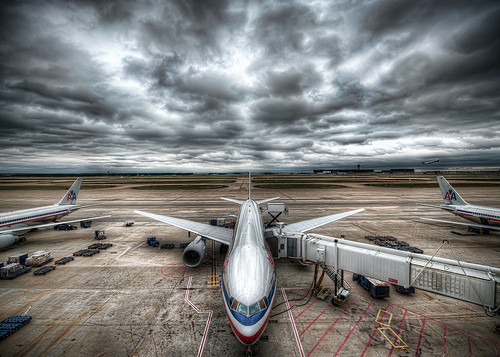
2. Plus Three, Minus Eight
According to David Palmerton, a US Federal Aviation Administration (FAA) expert on plane crashes, these are the crucial 11 minutes when you need to be alert on an airplane. The three minutes during takeoff and final 8 minutes before landing are when 80% of plane crashes occur, usually due to wet weather. Stay sober, hold off on your nap, and don’t bury your face in a book and follow the plus three, minus eight rule.
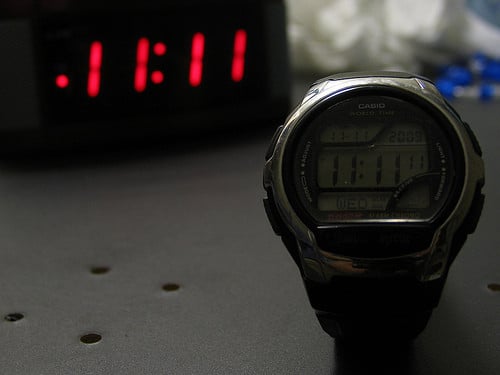
3. Be Ready To Part With Your Carry On
Most people who survive the initial impact of a plane crash, yet still lose their lives, do so because they try to take their carry-on luggage with them. Anything that’s really important to you sentimentally or otherwise should be in your pockets – remember your life is more important than your iPod.
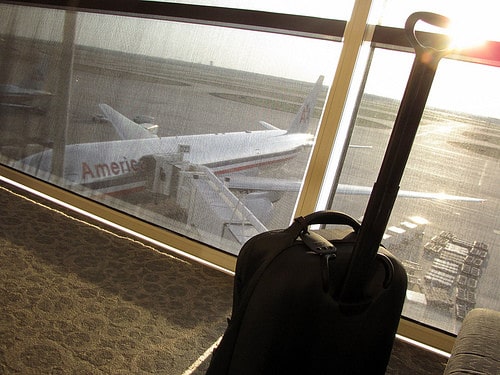
4. You’ve Got 90 Seconds To Get Out
In about the time it would take you to scan 3 posts on my blog page, an airplane cabin can reach temperatures that will melt human skin. That’s all the time you’ve got to get off a burning craft and one of the reasons to follow the 5 row rule and know where your aircraft’s emergency exits are.

5. Have A Plan Of Action
The Survivor’s Guide: The Secrets And Science That Could Save Your Life has an excellent exit strategy to follow should you need one. The key however, is to have one, as people tend to do very strange things when faced with incredibly stressful situations they’re not prepared for. Things like leaving their infants behind or sitting in shock in their seats as the plane around them burns to the ground. Ben Sherman calls this “active passiveness”, a phenomenon present in all major disasters like earthquakes, terror attacks, and plane crashes.

6. Skip Stockings, Heels, And Extra Meals
Fabric like nylon has a low melting point, easily cooking its way into your skin in the event of a fire after a crash; and high heels aren’t good for running (let alone walking). Also, yet another reason to keep up with your hotel room workouts and stay trim, is to consider the people who typically survive plane crashes – according to plane crash statistics, slender males fared best. Smaller people fit through more places and an extra step or two could save your life.

7. Keep Your Seat Belt On And Brace Yourself
Somewhere along the line seat belts stopped being cool – that is until you’re hurdled into the seat in front of you with the force of several thousand kilos. Keeping your seat belt on and tightly fastened can not only save your life but also protect you from injury in rough turbulence. Make sure you read the safety pamphlet on the plane and wear the seat belt tightly fastened. While you’re at it, learn the proper brace position, it will greatly reduce your chance of head trauma.
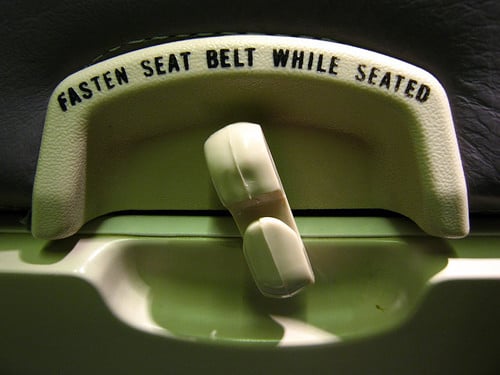
The Odds Are In Your Favor
Human beings are terrible at assessing risk based on probabilities (our memories fuel our fears) but you can still relieve your flying anxiety without relying on the statistics. While luck and some random chance does factor in on your survival, remember that a few seconds of preparation before each flight can help you in the unlikely event of an unorthodox landing.
[photos by: Stuck In Customs (American Airlines plane), Dennis.Vu (elevens on clock), renedepaula (carry on luggage), Dyntr (90), arunjrk (airplane safety message), Martin Neuhof (high heels), Sean Munson (keep seat belt fastened)]


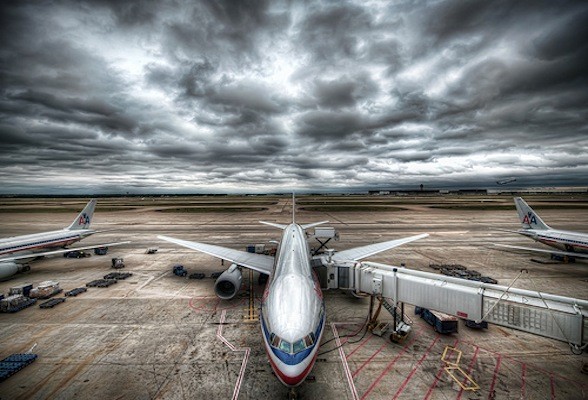



![12 Things To Know Before Flying A Drone So You Don't Crash It [VIDEO] 12 Things To Know Before Flying A Drone So You Don't Crash It [VIDEO]](https://foxnomad.com/wp-content/plugins/contextual-related-posts/default.png)







Great advice! Especially agree with wearing comfortable cloths and shoes! I have finally given up my dream of meeting the man of my dreams on a long haul flight – and now I really just dress for comfort…comfy shoes = fast exit.
Also true about really being alert during take off and landing. Will try not to fall asleep while taxi-ing next time!
Although I never wore heels, my dad would always caution me as a child to wear shoes I could run in – especially when traveling. He’s a survivalist at heart and tells me “you never know when you’ll need to get out of somewhere quick”. It seems the experts agree!
…and who knows, maybe dream guy will appreciate your practicality!
I’m so happy that I’m not scared to fly. I need to fwd this to some people.
haha, I’m not too much either, although scary thoughts do creep into my head from time to time!
Great post Anil! How many hrs of research did u have to do for this? Lol
This post has been brewing for several months 🙂
Great post Anil, full of interesting facts.
People actually try to take their carry-on luggage with them?! It’s crazy how some people are willing to risk their life for material things..!
They take the luggage and leave the infants behind!
I always wear sneakers when I travel because they take up the most room in a suitcase. Now I’ve got another motivation!
Two good reasons no matter how you look at it 🙂
great post! i shared this with my friends.
Thanks Lilliane, I appreciate it!
Good post Anil!!
I often fly on a pass (stand by) so I have to travel dressed up but I always make sure I’m wearing dress pants and flats – they dont burn as quick and are easier to run in ! 🙂
haha, now that makes flying seem scary but I think the same way!
Great post! Never really thought of a plane crash happening before because it seems so unlikely.
Thanks Jenny. I guess I’m not completely comfortable with flying, I think about crashing for a moment or two right at take off!
This is so incredibly useful Anil, and relieving – flying isn’t one of those things I overly fear but it’s great to just read through quick tips like this to prep…and I completely wouldn’t have guessed that the survival rate was that high.
That one stat alone makes me feel better about flying!
I’ve never been afraid of flying since the odds of a crash are so low it doesn’t even blip on my radar, but seeing how many people actually survive crashes makes me feel even more confidant… especially with these tips.
Thanks!
I figured a bit of good news about plane crashes couldn’t hurt 🙂
i’m going to be even more frightened than i already was for the last 8 minutes now.
(but thanks for the tips!)
haha, sorry! Although I’m a bit nervous on landing as well, getting closer to the ground makes me feel much better than takeoff 🙂
This is a great post! I’ve always figured that if there’s a plane crash we’re all doomed, but I guess that isn’t the case.
I used to sleep until the plane actually landed, but now that I travel with a young child, I don’t need to worry about napping during those critical 11 minutes. 🙂 I’m too busy administering fruit snacks and looking out the window.
Safety multi-tasking!
Good advice, although we’re probably more likely to save our own lives by worrying about more likely risks, such as car accidents (1 in 6000 people die this way, I believe) as well as diabetes, heart disease, etc.
True, although both aren’t mutually exclusive 🙂
Actually, the year after 9/11, people started driving more instead of taking planes (in the US). Research was done and showed that in that year, about 1500 more people died in traffic accidents than any years prior or after that year.
So people spent so much time worrying about air traffic, that they put themselves in danger by opting for something much more dangerous: car traffic ^_^
Don’t mean to say the above isn’t a good post though. I fly often, so it’s good to know what to do; just in case.
Ha, fascinating but doesn’t surprise me – human beings are terrible at evaluating risk. Reminds me of all the privacy trades that have been made since 9/11; along with the cost. Imagine if those funds were allocated to more common risks…
Yup. I’m currently reading a book about it, called Risk, by Dan Gardner. Apparently our brain did not evolve much from when we were running around, hunting, etc. So basically, we’re still using our animal brain a lot to asses risk/danger, but it’s usually horribly wrong and not adjusted to the way we live now.
Especially now that we’re more interconnected, and able to see and share more dangerous events and experience them with our eyes and ears via television, our animal brain makes us believe that the world is getting more dangerous, instead of safer. It’s a great read while travelling by the way. So many great stories and insights; makes for a great conversation in hostel bars 🙂
Thanks for the recommendation – risk analysis is one of my favorite topics. I’ll add this one to my ereader wish list 🙂
If only you knew something about the so called “brace position”. Watch mythbusters, it will not save you.
If only I did, why don’t you enlighten me?
A great post…. and one that reminds me of my frustration when I see fellow travelers bury their noses in magazines or headsets during takeoff. I’ve flown many times, but I’ll at least *try* to pay attention to the safety announcements. Frankly, if the guy across from me wants to die because he wasn’t paying attention to the safety rules, that’s his right, but it’s offensive to realize that his ignorance and general stupidity may lead to my injury or death.
And for crying out loud… keep your seatbelt on and stayed seated when the plane lands! It’s not like you unfastening your belt 30 seconds before the seatbelt sign is turned off means you can leave the plane any earlier!
Some people fly so often that they can repeat the safety instructions word for word though…
But yeah, it really bugs me when people get up early… especially when they start opening the baggage compartments while the plane hasn’t stopped yet :-\ I’ve heard luggage and stuff inside the plane falling / flying around during turbulence injure/kill more people than plane crashes.
According the book Survivor’s Guide, *other* people paying attention to the announcements are the primary motivation for others to do so as well. Guess there’s some social pressure at play – but works both ways!
Eek, I’m not sure I want to think about this subject – and does the +3 -8 rule have much to do with the passengers? – surely it should be the pilot who should take care not to be dozing off at those times, not me.
I had an interesting chat with a commercial pilot friend who says that 90% of the times the plane could be on autopilot but it’s the times when they have to land in bad weather or with strong side winds that they really earn their money
http://www.heatheronhertravels.com/confessions-of-an-airline-pilot/
Maybe it goes with #4 and making those few seconds count.
I love this post. I always find the nearest exit and try to sit on the aisle as I’m determined that I’ll be one of those who make it if the plane goes down.
Interesting point about nylon stockings. I do wear compression hose when I fly long-haul and DVT is much more likely than a plane crash, so I suppose that I’ll continue to do so.
Never hurts to be prepared 🙂 Do you fly very often?
The chances of dying in a plane crash are 1 in 11,000,000. The chances of dying in a car crash are 1 in 5,000.
That is not entirely accurate, it depends on how often you fly. (Approx. 1 in every 140,000 flight hours or 1 in 20,000 for frequent flyers.) Still, the odds are overwhelmingly that most people will never be involved in a crash.
That point aside, preparation doesn’t hurt and according to “The Survivor’s Guide” is often the difference between surviving and not.
They should put this info in the safety booklet in the seat pockets on all planes!
haha, might make all the nervous fliers even more apprehensive 😛
i’ve only flown twice and i was petrified both times. i tell people i held the plane in the air by gripping the arm rests, lol. i’m forever a road trip girl.
When I was much younger I was also pretty scared of flying and strangely got comfort out of holding the armrests as well. One way to get over or ease your fear dramatically is to fly more. It will help, trust me 🙂
i wouldn’t rule it totally out, but i was raised sort of a nomad and we always traveled by car. the times that i flew were in 2000 when i went to disneyland with my husband and son. i fell in love with california and would love to go back, but the next year 9/11 happened and now that you practically have to jump through hoops to get on a plane we go everywhere by car. maybe someday tho…
Isn’t it ironic that studies have shown that due to the fact that more people drove after 9/11 instead of flying, more people died in ADDITIONAL auto accidents (above the normal rate) in the 2 years after 9/11 than the number who died as the result of the actual attack.
See Malcolm Gladwell’s books for more info.
I’m thin and fit but I don’t think I could ever get my 3 and 6 year old out in 90 seconds. 🙁
I wouldn’t put anything past a determined mother. You might in fact have an advantage…
This is very interesting information and tips I hope I never have to use!
Hope you never have to use them either!
Great article and something that needs to be disseminated more widely.
– Its true, you generally survive the plane’s crash landing. Most deaths are the result of the smoke inhalation from the ensuing fire – so get out quickly. I was chatting to a pilot friend about smoke inhalation and he said the best defence was 2 medical face masks – it will give you a little more protection from the smoke – and it doesn’t weigh much.
– I’ve done my fair share of travel and could possibly quote most safety briefings by heart.
The only thing I do these days is COUNT the number of rows to the emergency exit. That way if there is a problem and I can’t see (see smoke above) I just have to count the rows and then I’ll be out.
– On the heel’s thing – they won’t allow you down the emergency chute in heels, so you could land up having to run around burning fuel and tiny metal pieces barefoot!
Good points and one research shows clearly – just a moment of planning (counting rows, not wearing heals, etc.) increases your odds of survival significantly. There’s enough data about crashes and survivors that statisticians can draw clear lines between who’s likely to live and who won’t get out in time.
I always count the seats between me and an exit row. I assume I won’t be able to see, so I mentally touch the top of each row to reinforce and simulate how I would reach the closest exit.
Having a plan, as I have learned is a key to surviving, as is a little luck
Ever since I read The Survivor’s Guide I started counting as well 😉
Very useful and very interesting. It’s always good to prepare in case of an emergency
A very enlightening article. This facts needs to get out more often as most people equates a plane crash to sure death.